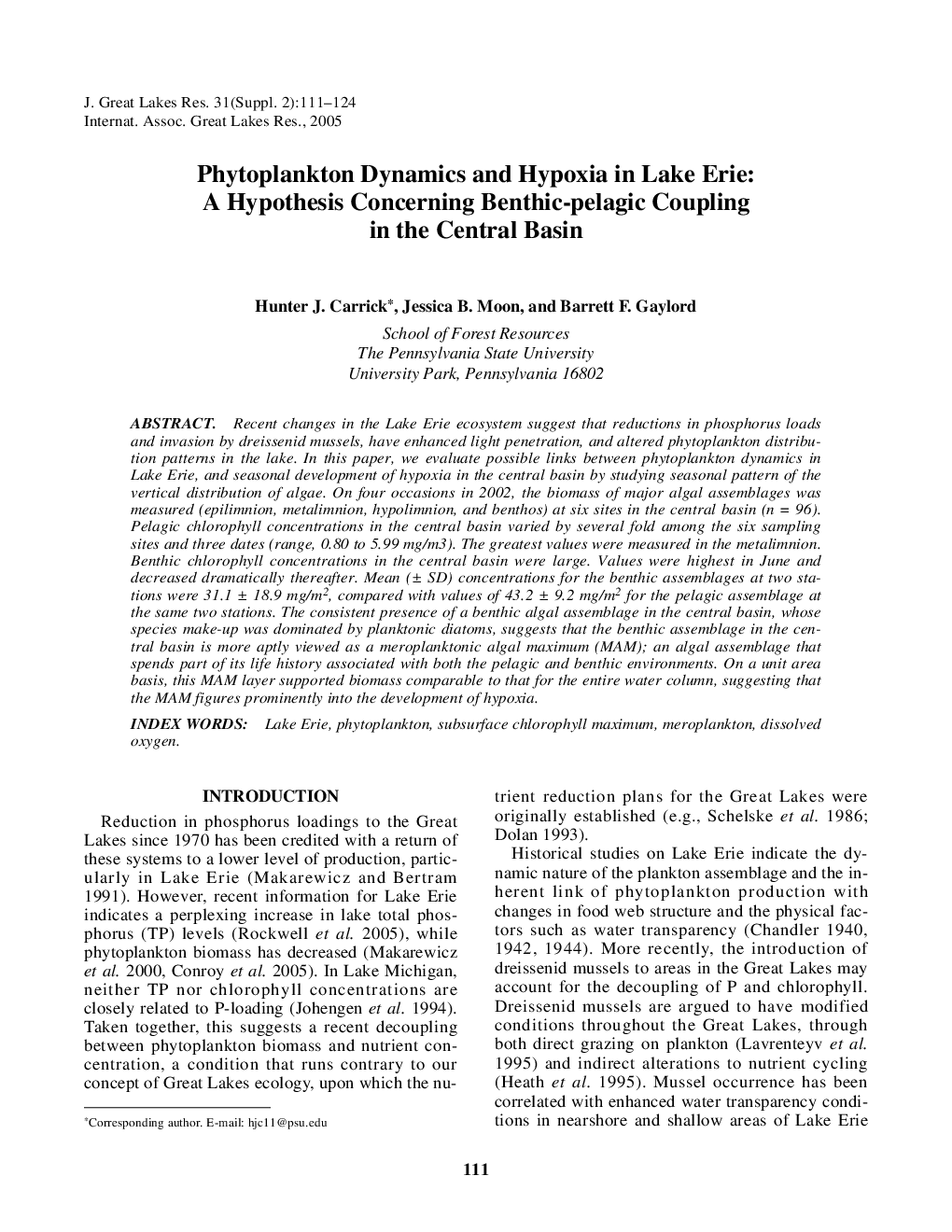| Article ID | Journal | Published Year | Pages | File Type |
|---|---|---|---|---|
| 9450243 | Journal of Great Lakes Research | 2005 | 14 Pages |
Abstract
Recent changes in the Lake Erie ecosystem suggest that reductions in phosphorus loads and invasion by dreissenid mussels, have enhanced light penetration, and altered phytoplankton distribution patterns in the lake. In this paper, we evaluate possible links between phytoplankton dynamics in Lake Erie, and seasonal development of hypoxia in the central basin by studying seasonal pattern of the vertical distribution of algae. On four occasions in 2002, the biomass of major algal assemblages was measured (epilimnion, metalimnion, hypolimnion, and benthos) at six sites in the central basin (n = 96). Pelagic chlorophyll concentrations in the central basin varied by several fold among the six sampling sites and three dates (range, 0.80 to 5.99 mg/m3). The greatest values were measured in the metalimnion. Benthic chlorophyll concentrations in the central basin were large. Values were highest in June and decreased dramatically thereafter. Mean (± SD) concentrations for the benthic assemblages at two stations were 31.1 ± 18.9 mg/m2, compared with values of 43.2 ± 9.2 mg/m2 for the pelagic assemblage at the same two stations. The consistent presence of a benthic algal assemblage in the central basin, whose species make-up was dominated by planktonic diatoms, suggests that the benthic assemblage in the central basin is more aptly viewed as a meroplanktonic algal maximum (MAM); an algal assemblage that spends part of its life history associated with both the pelagic and benthic environments. On a unit area basis, this MAM layer supported biomass comparable to that for the entire water column, suggesting that the MAM figures prominently into the development of hypoxia.
Related Topics
Physical Sciences and Engineering
Earth and Planetary Sciences
Earth and Planetary Sciences (General)
Authors
Hunter J. Carrick, Jessica B. Moon, Barrett F. Gaylord,
